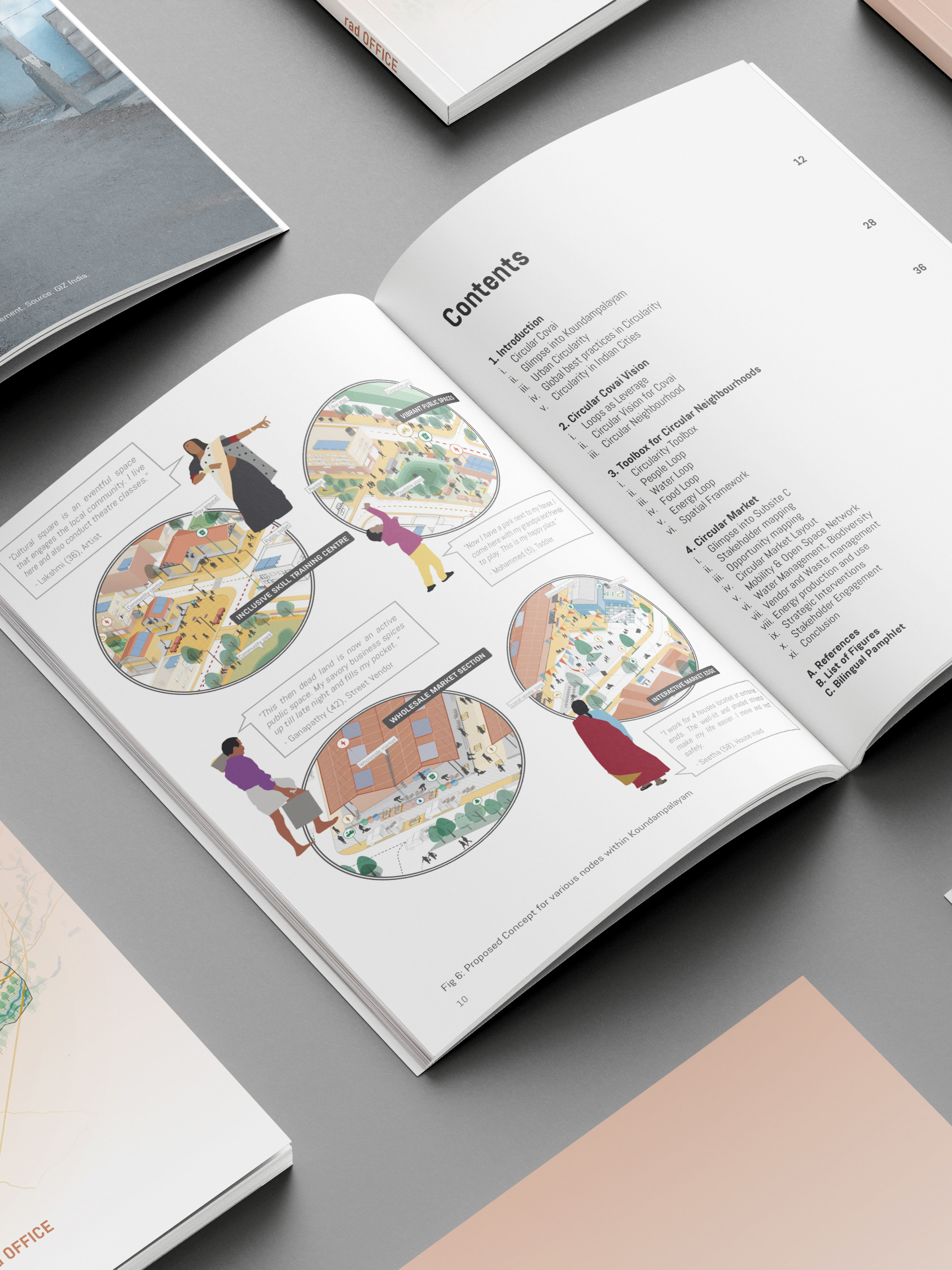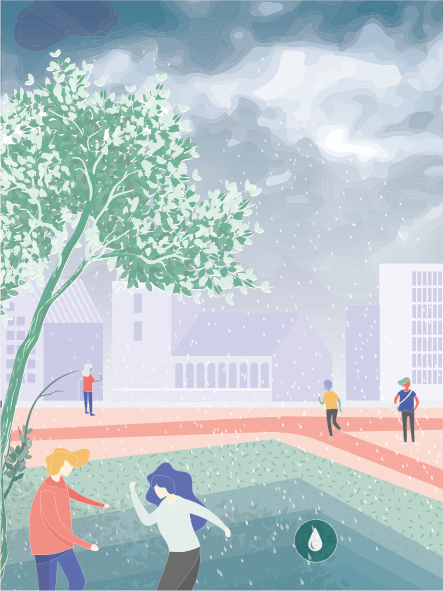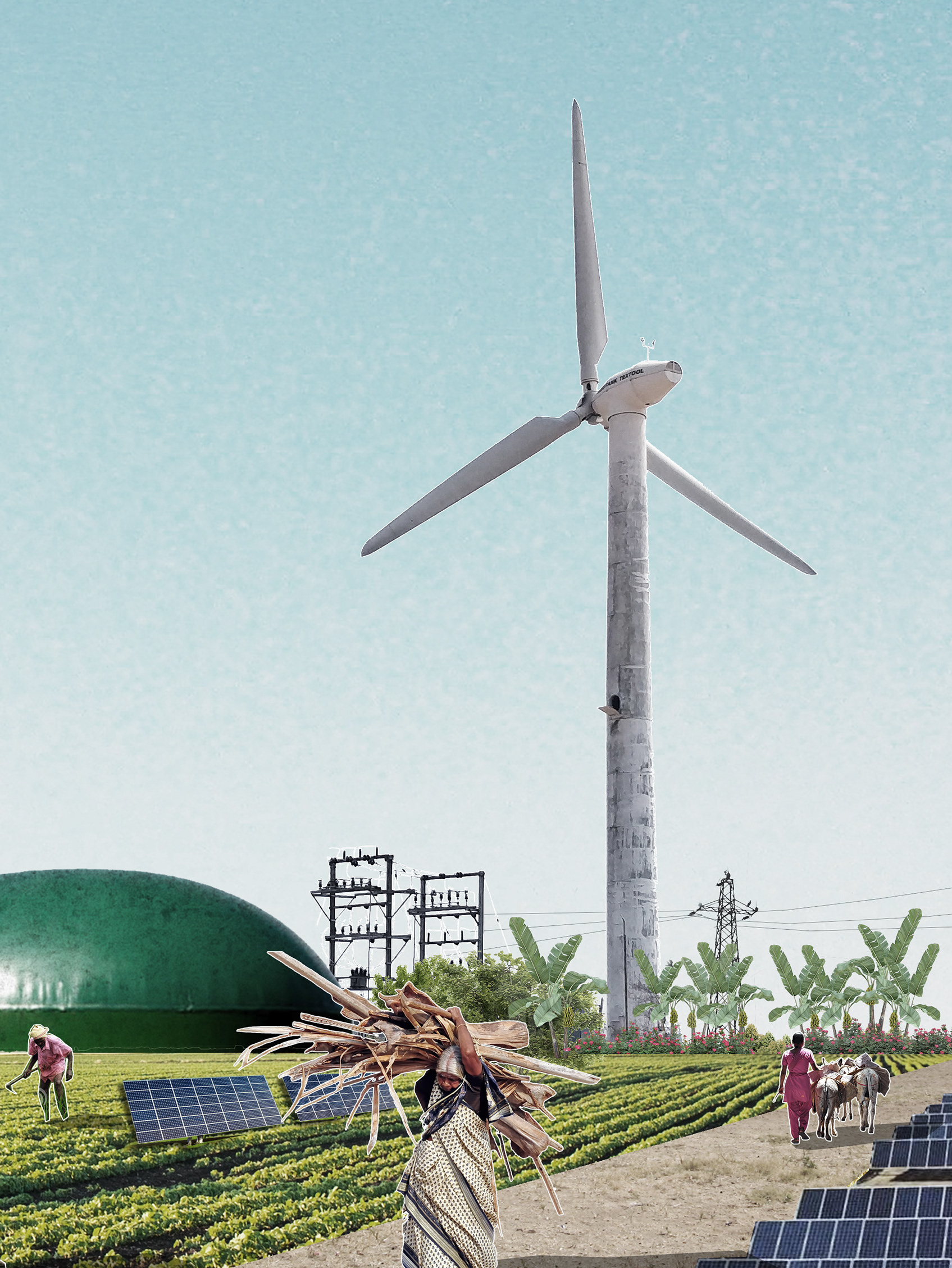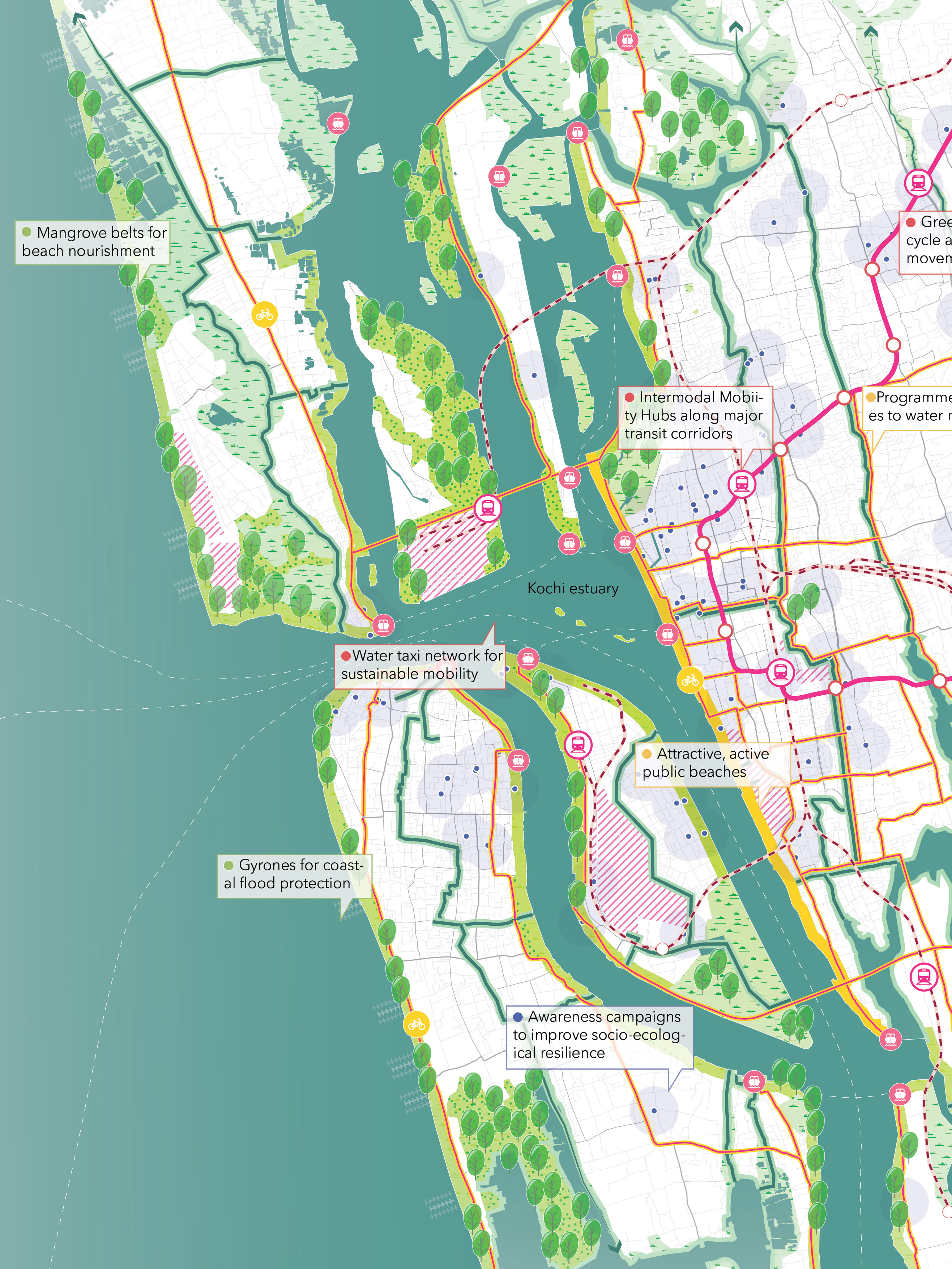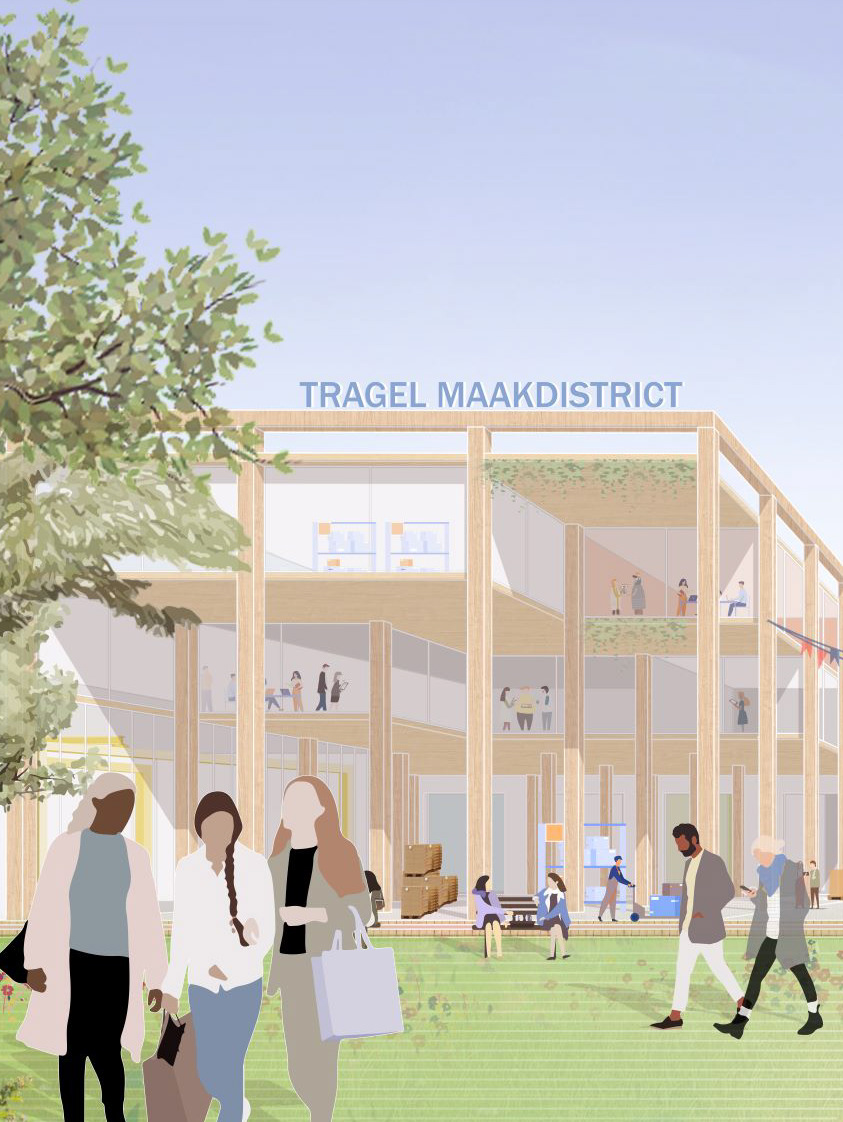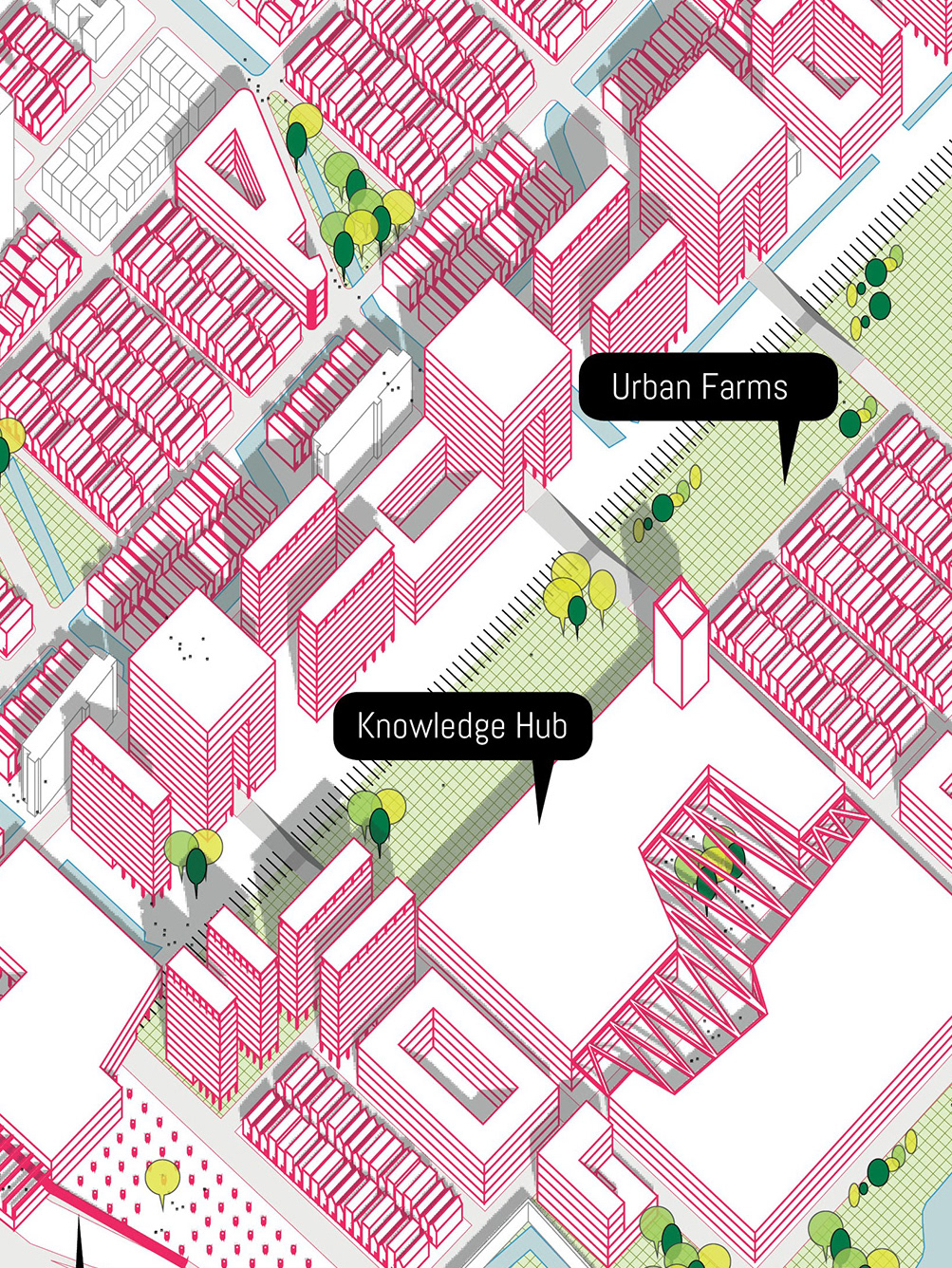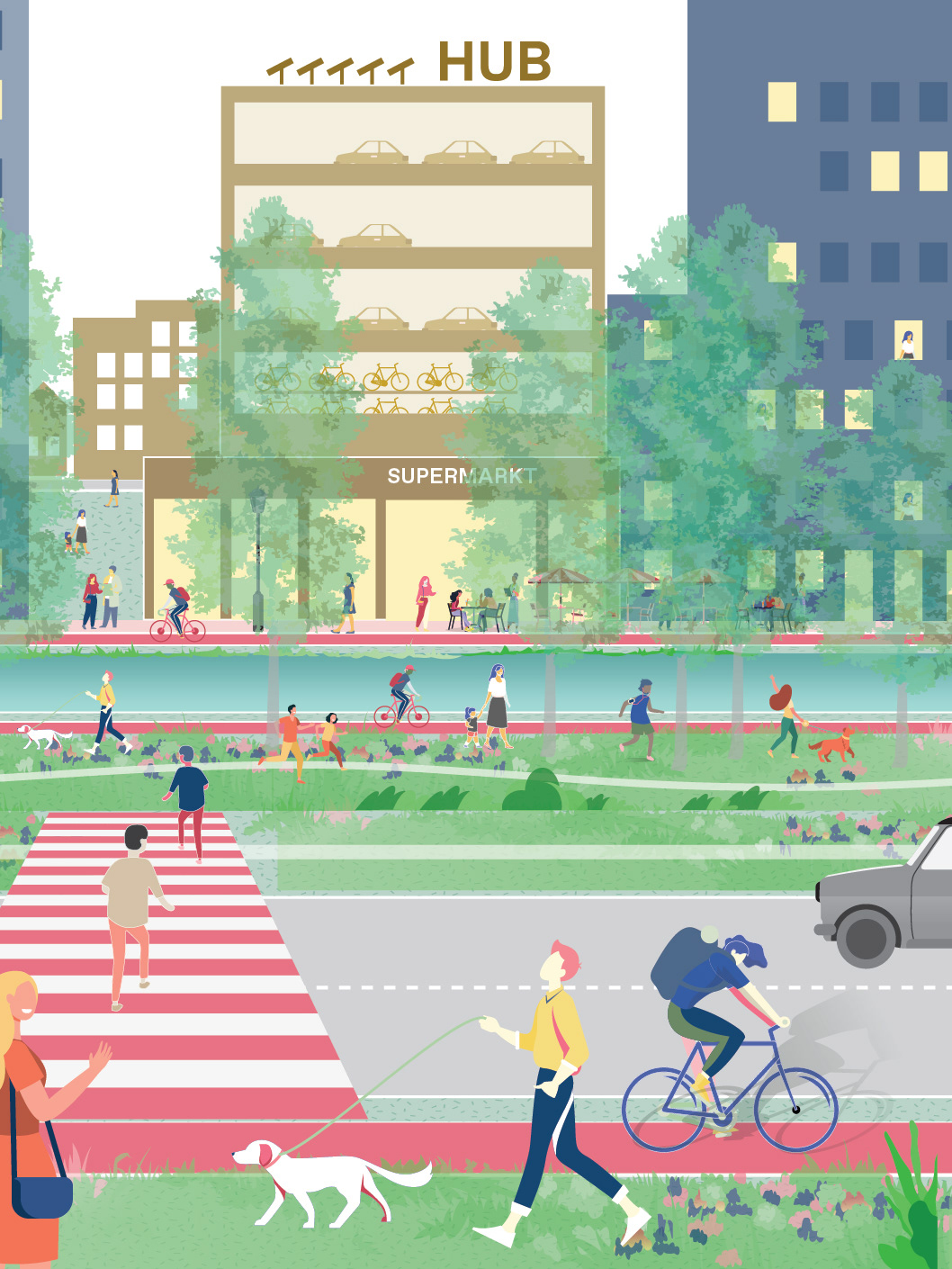Details
Type: Open competition; CoVai Urban Design Competition, organised by Coimbatore City Municipal Corporation, Coimbatore Smart City, Deutsche Gesellschaft für Internationale Zusammenarbeit (GIZ) GmbH , with Taru Leading Edge and urbanista.
Collaborators: Bala Nagendran, Ganesh Babu R P, Radhakrishnan T R, Mona Vijay Jain, Rohit Lahoti, Yash Gogri
Location: Coimbatore, Tamil Nadu, India
Commendations: Second winning team. Contracted to develop the Masterplan and Detailed Project Report (DPR)
More information: Link to competition website
Collaborators: Bala Nagendran, Ganesh Babu R P, Radhakrishnan T R, Mona Vijay Jain, Rohit Lahoti, Yash Gogri
Location: Coimbatore, Tamil Nadu, India
Commendations: Second winning team. Contracted to develop the Masterplan and Detailed Project Report (DPR)
More information: Link to competition website
#SpatialStrategy #UrbanDesign
Covai has developed from a humble village along R. Noyyal to an energized industrial hub. The city that grew concentrically around the Town Hall and lakes have expanded linearly along the arterials, inducing agglomeration and gentrification. As a responsive step forward — complementing the United Nations sustainable development goals and Coimbatore SUD-SC vision — we aim to foster integrated ward planning in Koundampalayam by leveraging the existing assets. Living in uncertain times, the Covid-19 global pandemic has emphasized the need to co-create resilient, adaptive, and liveable communities. Circularity as the core lifestyle and planning value can synchronize our living systems and accelerate the goals of regenerative ecology, inclusive society, and a productive economy.
Responding to the challenges and responding to the assets at macro and micro scales, our proposal presents a replicable and scalable urban circularity model that leverages the loops of PEOPLE, WATER, FOOD, and ENERGY.
Circularity Toolbox
The Circular framework comprises 4 loops, each bringing 4 guiding actions with 48 tool blocks that build the ‘CircularityToolbox’. Each tool block is mapped with the nature of the intervention (Open Space, Street, Building, Programming), scale of intervention (XL, L, M, S), and the representative ecological, social, and economic values that cumulatively represent the circularity coefficient. The four loops and the guiding actions are the determinants of the circular paradigm.
People: Live-Move-Work-Engage
Water: Collect-Treat-Release-Restore
Food: Produce-Trade-Consume-Compost
Energy: Generate-Distribute-Utilize-Conserve
People: Live-Move-Work-Engage
Water: Collect-Treat-Release-Restore
Food: Produce-Trade-Consume-Compost
Energy: Generate-Distribute-Utilize-Conserve
Design interventions:
Subsite C - City Market: The site for relocating Dr. MGR wholesale market is a city-level TRADE node in the food network which also activates adjoining residential neighborhoods through people’s plaza, street market, solid waste management (SWM) unit along Jeeva Nagar Road, and the community facilities for the informal settlements along the North-Eastern edge. The market area has 3 zones: administrative & retail facilities(1), tomato and onion sections(2), and other vegetables section(3). Segment 1 shares active and porous edges for people to MOVE and ENGAGE. The parking space and the cleaning shed are clustered with the SMW unit for functional efficiency. Sloped roof surfaces GENERATE solar energy and COLLECT rainwater. The central court is part of the blue-green network which acts as a public space, hosting temporal activities. The relocation of the market will improve neighborhood-level safety, facilitate economic activities, and attract a healthy market.
Subsite D - Circular Neighbourhood: The 4 loops are articulated through 3 principles - retrofitting the existing fabric (Phase-01), infill development in blocks with scattered vacant plots (Phase-02), and greenfield development by pooling the Northern open lands (Phase-03). Inclusive and dense mobility network which prioritize walking, cycling, public transport, informal public transport — through public transit corridors, slow streets, shared streets, and NMT-only routes — ensures seamless connectivity for all users. The network of streets is punctuated with parklets, plazas, and community facilities to tie-up MOVE and ENGAGE activities. The blue-green lifeline, natural swale, stormwater ducts, pipes, and rainwater harvesting channels together COLLECT, TREAT, RELEASE, and RESTORE water.
Citizen-led Circularity
The tool blocks are assorted seeds that require careful selection and sequential nurturing, to enjoy the real benefits of circularity. Participatory approach that builds a shared vision in an informed manner is the key. The toolbox is not only a planning guide but a window for breaking down tough technical solutions through visual cues and local language to facilitate dialogue and enable co-creation. The toolbox can work as play cards for stakeholder gaming sessions and as cue cards for community story-telling sessions. The need for co-creating Koundampalayam, and largely Covai, is a process that is participatory, inclusive, contextual, climate-responsive, interdisciplinary, and which can bridge the gap between institutional processes and community aspirations. The idea of engendering microsystems as PEOPLE, WATER, FOOD, and ENERGY loops would gradually scale-up across all the wards to embed Circular Covai - as a collective sustainable vision for the future.

